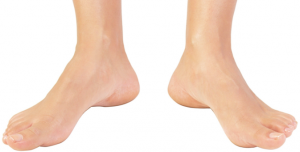 Out-toeing describes the outwardly turned position of the feet that is sometimes referred to as ‘duck feet’. While both in-toeing and out-toeing may occur as a normal part of development in young children, these should resolve by the age of eight. While out-toeing is less common than in-toeing, its implications may be more serious if the out-toeing persists.
Out-toeing describes the outwardly turned position of the feet that is sometimes referred to as ‘duck feet’. While both in-toeing and out-toeing may occur as a normal part of development in young children, these should resolve by the age of eight. While out-toeing is less common than in-toeing, its implications may be more serious if the out-toeing persists.
Out-Toeing
 Out-toeing describes the outwardly turned position of the feet that is sometimes referred to as ‘duck feet’. While both in-toeing and out-toeing may occur as a normal part of development in young children, these should resolve by the age of eight. While out-toeing is less common than in-toeing, its implications may be more serious if the out-toeing persists.
Out-toeing describes the outwardly turned position of the feet that is sometimes referred to as ‘duck feet’. While both in-toeing and out-toeing may occur as a normal part of development in young children, these should resolve by the age of eight. While out-toeing is less common than in-toeing, its implications may be more serious if the out-toeing persists.








